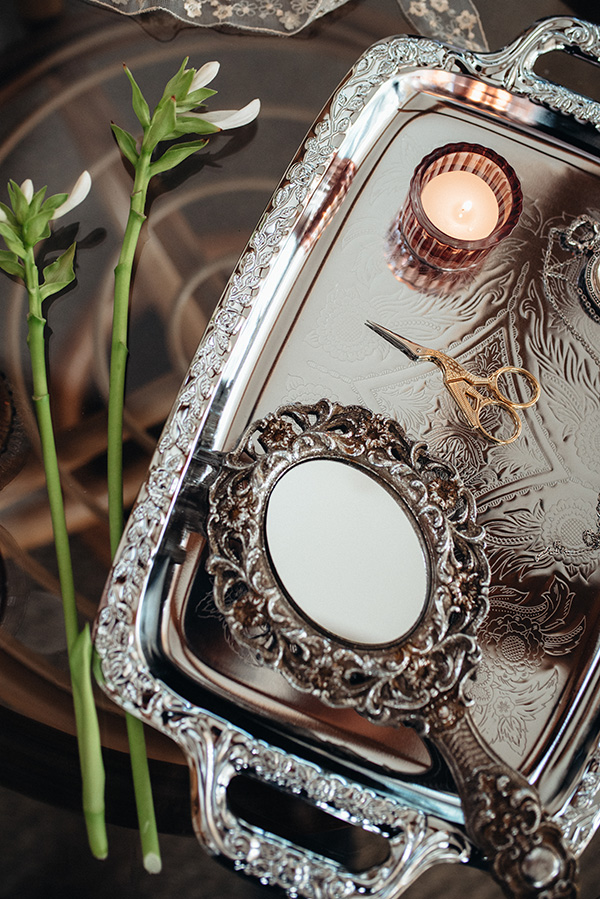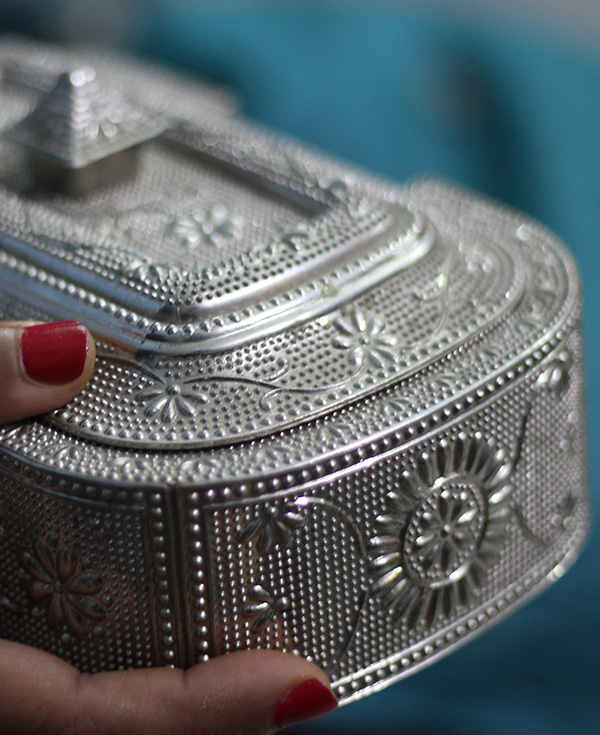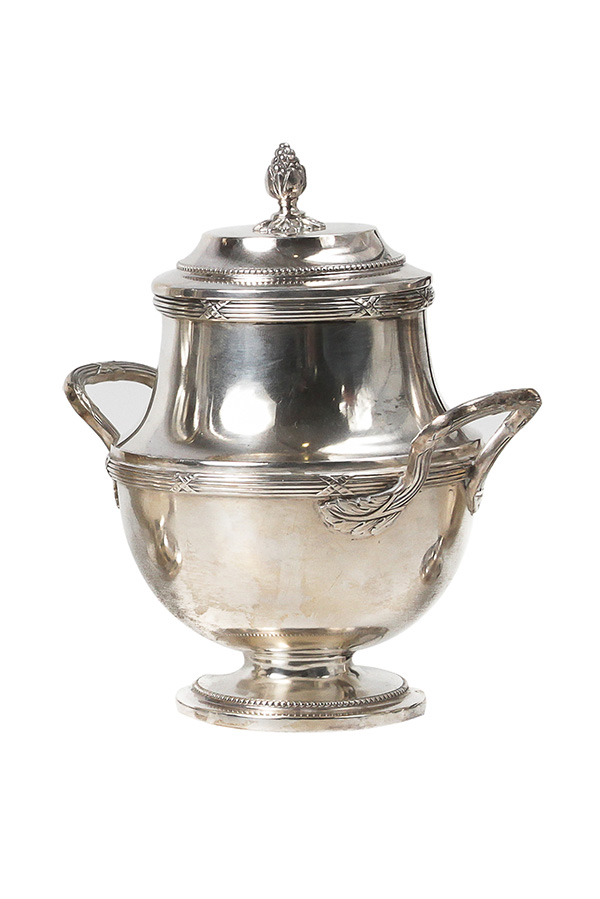Silversmithing, a craft steeped in history, traces its origins to ancient times when artisans began fashioning silver into ornate objects, symbolizing wealth and cultural significance. Over the centuries, this art evolved, with each era contributing new techniques and styles. From the meticulous handwork of ancient civilizations, through the artistic explosion of the Renaissance, to the transformative innovations of the Industrial Revolution, silversmithing has mirrored the progress of society itself. This craft’s journey from ancient handcrafting to the dawn of mechanization is a fascinating tale of creativity, ingenuity, and enduring craftsmanship.
Ancient Silversmithing
In ancient civilizations, silversmithing was an expression of culture and artistry. Silver objects were valued for representation of wealth and status. For instance, the ancient Egyptians crafted dazzling jewelry, amulets, and even sarcophagi for the elite out of silver. The Greeks and Romans, on the other hand, sculpted stunning silverware, ranging from goblets and plates to decorative statues, often adorned with mythological scenes and figures.
Despite the limitations of the tools available then, these ancient silver pieces showcased astonishing detail and craftsmanship. Elaborate designs, inspired by nature, mythology, and everyday life elements, graced the surface of these exquisite works. These designs were not merely decorative but also carried deep symbolic meaning, reflecting the beliefs and values of their respective societies.


Ancient Silversmith Techniques
- Hammering: Shaping silver by skillfully striking it with a hammer. At Biro & Sons, we revere this technique, as it imparts a human touch that machines cannot replicate.
- Annealing: The essential process of heating and cooling the metal to make it more malleable. We utilize this technique to ensure the silver remains workable throughout crafting.
- Chasing and Repoussé: These time-honored techniques involve adding intricate designs to the silver. Chasing is the art of indenting patterns on the front of the metal. At the same time, repoussé is the technique of shaping the metal by hammering from the reverse side.
- Soldering: The method combines separate pieces of silver, resulting in functional and aesthetically pleasing joins. Our soldering techniques uphold the integrity of ancient practices, ensuring solid and seamless bonds.
Medieval to Renaissance
During Medieval times, silversmiths primarily created functional items like cutlery, goblets, and religious artifacts. A key innovation during this period was the development of casting, where molten silver was poured into molds to create intricate designs. This method allowed for uniformity and efficiency in producing multiple items.
The guild system, which provided structured training and standardization of techniques, emerged during this era. These advancements were instrumental in shaping the future of silversmithing, laying a foundation for more sophisticated methods and artistic expression in later periods.

Silversmithing during the Renaissance was marked by significant artistic development. This period saw a surge in creativity and technical skill, with silversmiths producing intricately crafted pieces. Essential techniques like engraving, embossing, and casting were refined, allowing for more elaborate and detailed works. The era was also known for introducing hallmarking, certifying the purity and origin of silver items. Silversmiths often incorporated goldsmithing techniques such as filigree and niello, reflecting the Renaissance’s broader emphasis on artistry and individual expression.
Medieval/Renaissance Silversmith Techniques
- Engraving Tools: Finely crafted tools, such as burins, were developed for intricate engraving work on silver, allowing for detailed artistry.
- Embossing Tools: Tools for embossing were refined to create raised designs with greater precision.
- Hallmarking Stamps: The introduction of hallmarking led to the creation of specialized stamps to certify the purity and origin of silver items.
- Casting: A process where molten silver is poured into a mold to form a shape.
Raising: Involves hammering a flat piece of silver into a hollow form, such as a bowl or cup. It’s a skillful technique requiring precision and control to achieve the desired shape.
Industrial Revolution
During the Industrial Revolution, silversmithing underwent significant changes with the introduction of mechanization and new technologies. This era saw the advent of machine presses and rolling mills, which facilitated mass production and improved consistency in silver items. The introduction of hydraulic presses further enhanced precision in shaping and cutting silver. These innovations marked a shift from purely handcrafted methods to a combination of manual skill and mechanization, significantly expanding the scope and efficiency of silversmithing.
While Biro & Sons uphold traditional silversmithing methods, the influence of Industrial Revolution technologies enhanced the efficiency and precision of silversmithing, blending the best of old-world craftsmanship with modern techniques.
Industrial Silversmith Techniques
- Restoration and Repair Work: Biro and Sons has a process to meticulously assess, clean, repair, and polish silver items to revitalize them to their original splendor and functionality.
- Mechanical Presses and Rolling Mills: These machines automate flattening and shaping silver. Rolling mills were used to produce uniform sheets of silver, while mechanical presses allowed for the mass production of silver items with consistent thickness and shape.
- Die Stamping Machines: Used for imprinting designs onto silver. Dies, or engraved stamps, were used with mechanical presses to reproduce intricate patterns and motifs with precision and uniformity. This process was much more efficient than manual engraving.
Hydraulic Presses: These provided the ability to exert greater force for shaping, cutting, and forming silver, allowing for more complex and precise designs that were difficult to achieve by hand.
The journey of silversmithing showcases a remarkable blend of artistry, innovation, and resilience. At Biro & Sons, we honor this rich legacy through our dedication to traditional techniques and our embrace of modern advancements. Our work in restoration, custom design, and creating unique pieces reflects a deep respect for the craft’s history and an unwavering commitment to its future. By preserving the past’s techniques and adapting to the present’s innovations, we at Biro & Sons are not just silversmiths; we are ensuring that the timeless beauty of silversmithing remains a cherished and enduring tradition.